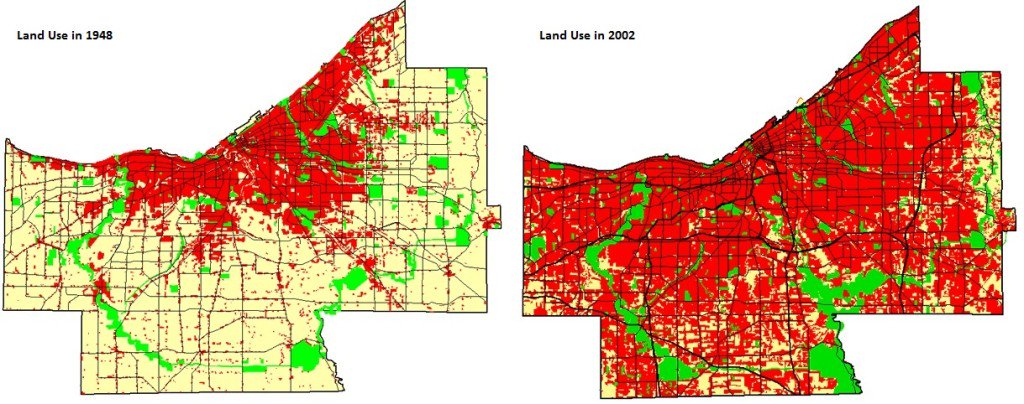Jason Segedy tweeted the image below contrasting the amount of urbanized land in Cleveland’s Cuyahoga County in 1948 vs. 2002. The county population was identical in both years: 1.39 million.

I’m not a hater on suburbanization. Growing populations require new urbanized land on the fringes. But when population growth is flat or negative in a region, which is the case in Cleveland and many Rust Belt cities, then sprawl has negative effects.
One of the them is the Chuck Banas quip that Buffalo has the same number of people, but three times as much stuff. When you double or triple your urban footprint, the cost of upkeep soars because you are paying to maintain and provide services to a lot more stuff. As we can richer as a society, we can afford to have more and nicer stuff. But it’s hard to make the argument that his has been the case of late in many of these Rust Belt cities where new suburban expansion continues to take place.
Another is that it puts downward price pressure on older developments through filtering. If you keep building new homes but you aren’t adding households, then older homes at the bottom of the scale will be abandoned. And all up the stack homes are devalued. This helps explain why even many inner suburban neighborhoods are falling into serious decay.
As a rough heuristics, development of new suburban footprint should largely be limited to the growth rate in households to avoid saddling a region with excess fixed cost.
from Aaron M. Renn
http://www.urbanophile.com/2018/03/16/sprawl-in-its-purest-form-cleveland-edition/
No comments:
Post a Comment